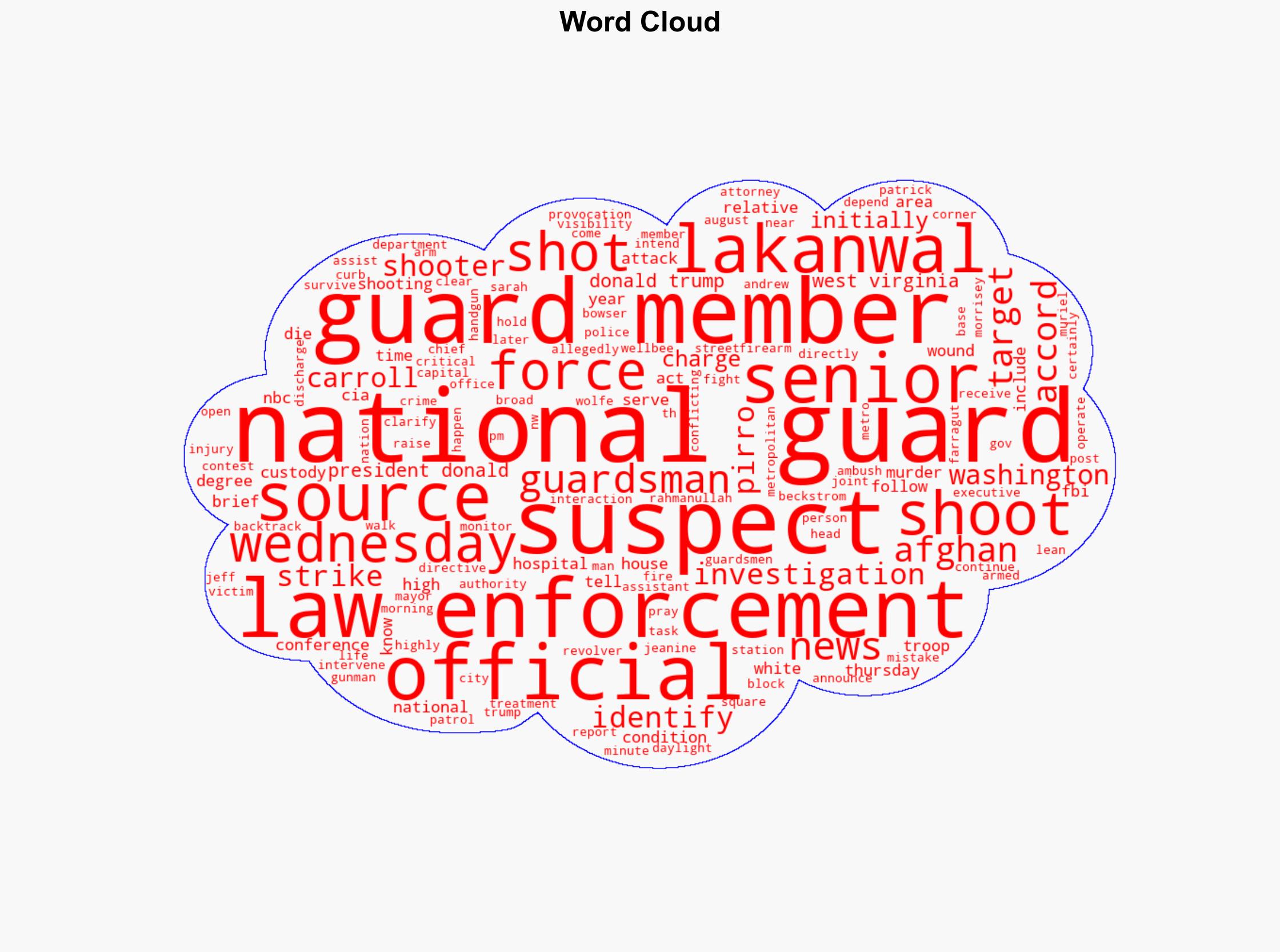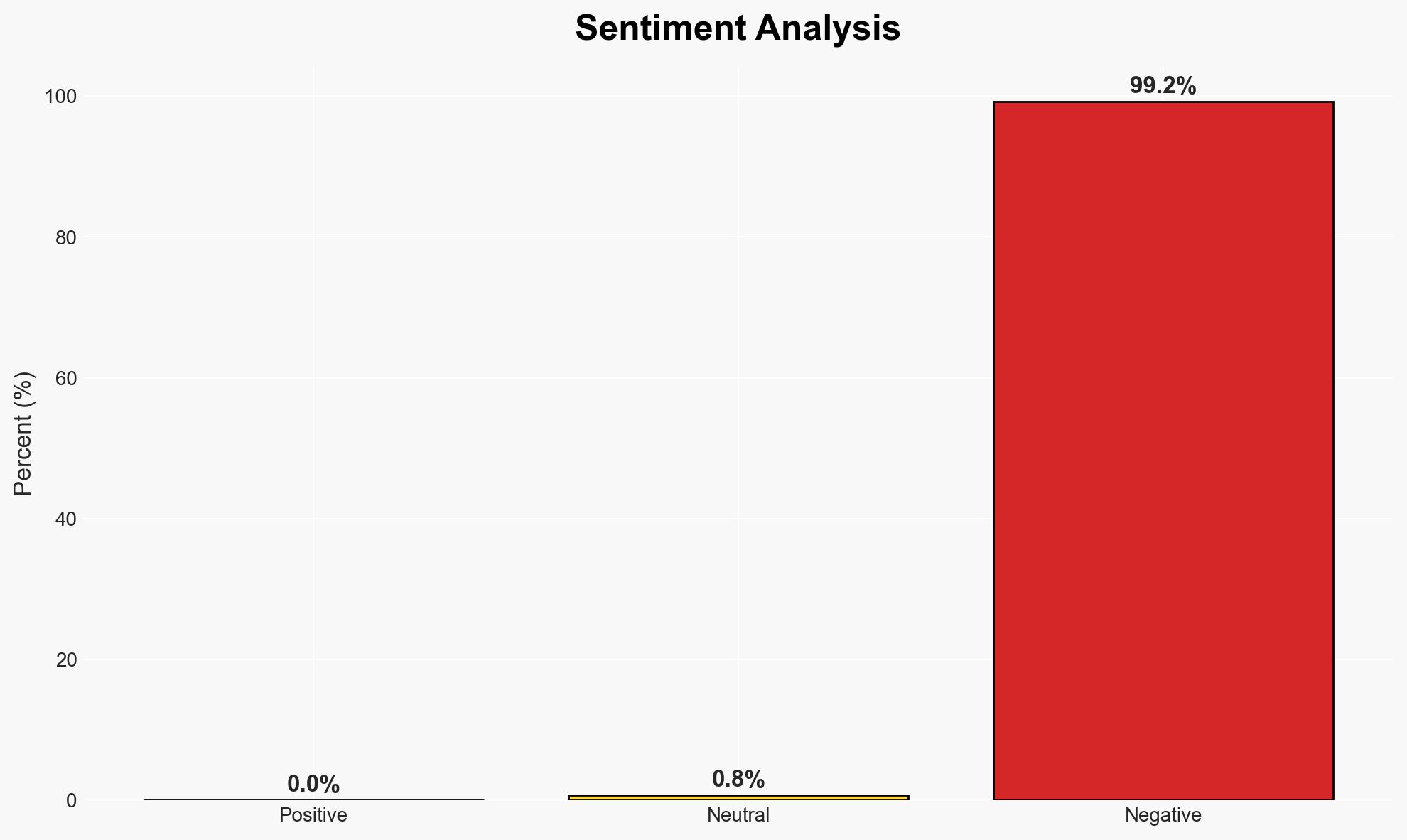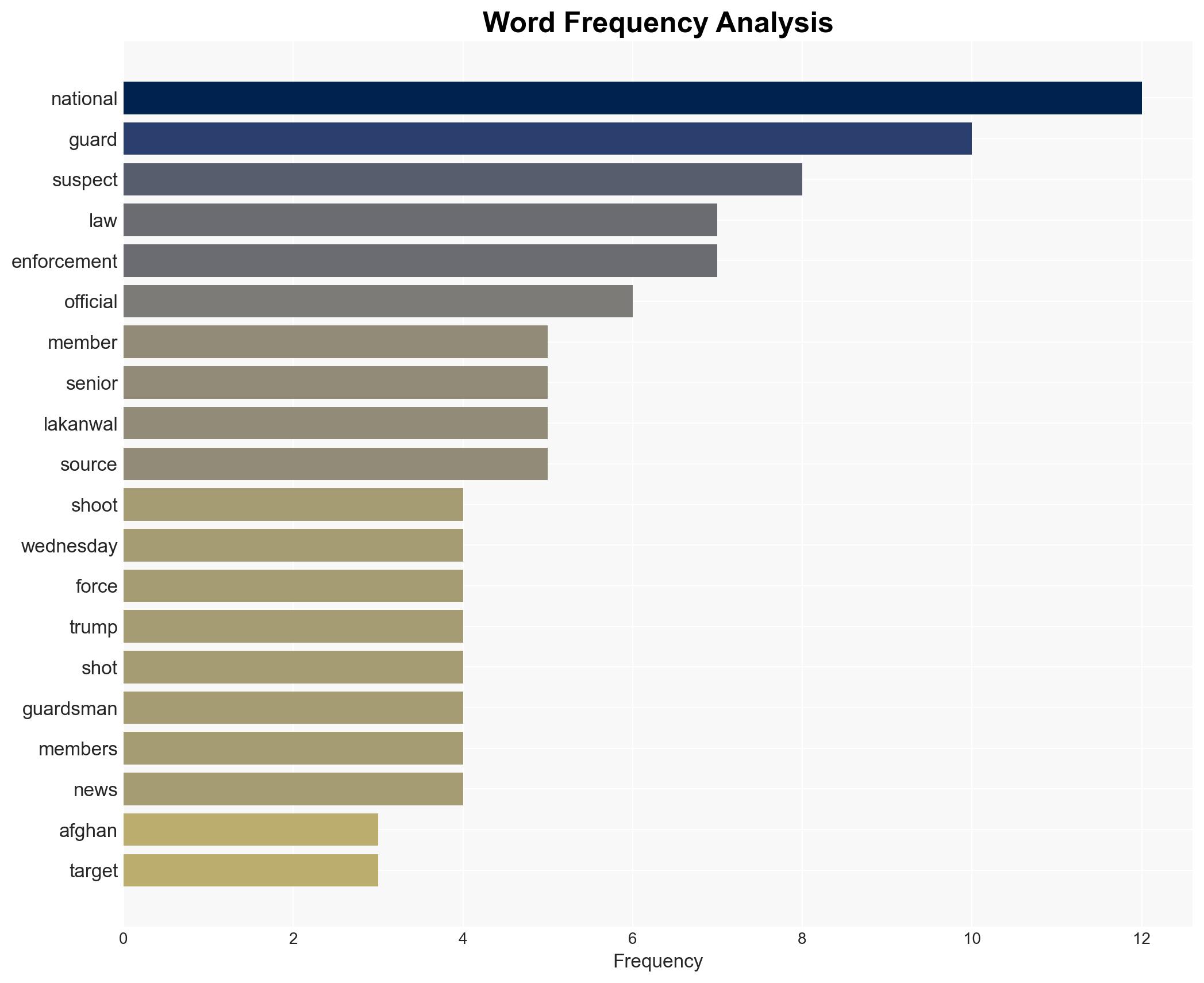Two National Guard Members Shot in Washington DC: Investigation Underway Following Daylight Attack
Published on: 2025-11-27
AI-powered OSINT brief from verified open sources. Automated NLP signal extraction with human verification. See our Methodology and Why WorldWideWatchers.
Intelligence Report: What we know about the Washington DC shooting of two National Guard members
1. BLUF (Bottom Line Up Front)
The shooting of two National Guard members near the White House appears to be a targeted attack potentially motivated by the suspect’s past affiliations with U.S. government entities. The incident raises concerns about insider threats and the security of high-profile areas. Current analysis supports the hypothesis of a targeted attack over a random act of violence, with moderate confidence due to limited available evidence.
2. Competing Hypotheses
- Hypothesis A: The attack was a targeted action against U.S. military personnel, possibly motivated by the suspect’s past experiences and affiliations with U.S. government forces in Afghanistan. Supporting evidence includes the suspect’s background and the deliberate nature of the attack. However, uncertainties remain regarding the suspect’s specific motivations and potential affiliations.
- Hypothesis B: The shooting was a random act of violence with no specific target, possibly driven by personal grievances or mental instability. This is contradicted by the suspect’s deliberate approach and the proximity to the White House, suggesting a more calculated action.
- Assessment: Hypothesis A is currently better supported due to the suspect’s background and the deliberate nature of the attack. Key indicators that could shift this judgment include further insights into the suspect’s communications and affiliations.
3. Key Assumptions and Red Flags
- Assumptions: The suspect acted alone; the attack was premeditated; the suspect’s past affiliations influenced the attack; the incident is isolated and not part of a broader plot.
- Information Gaps: Detailed motive of the suspect; any communications or planning indicating broader networks; the suspect’s mental health status.
- Bias & Deception Risks: Potential bias in interpreting the suspect’s background as indicative of motive; risk of overemphasizing the suspect’s past affiliations without concrete evidence.
4. Implications and Strategic Risks
This development could lead to increased security measures around high-profile areas and a reassessment of insider threat protocols. It may also influence public perception of security in the nation’s capital.
- Political / Geopolitical: Potential for heightened tensions regarding immigration and asylum policies, especially concerning former foreign military personnel.
- Security / Counter-Terrorism: Increased scrutiny on insider threats and potential for similar attacks on military or government personnel.
- Cyber / Information Space: Potential exploitation of the incident in information operations to influence public opinion or policy debates.
- Economic / Social: Possible impact on local business and tourism due to perceived security threats in Washington, DC.
5. Recommendations and Outlook
- Immediate Actions (0–30 days): Enhance security protocols around key government areas; conduct thorough investigation into the suspect’s background and potential networks; increase public communication to manage perceptions.
- Medium-Term Posture (1–12 months): Develop resilience measures against insider threats; strengthen partnerships with local law enforcement for intelligence sharing; review asylum and immigration vetting processes.
- Scenario Outlook:
- Best: Incident is isolated, leading to improved security measures without further incidents.
- Worst: Emergence of a pattern of targeted attacks, requiring significant policy and security overhauls.
- Most-Likely: Increased security measures and public awareness, with no immediate follow-up attacks.
6. Key Individuals and Entities
- Rahmanullah Lakanwal (suspect)
- President Donald Trump (contextual role)
- FBI Director Kash Patel (investigative role)
- Metropolitan Police Department (local law enforcement)
- West Virginia National Guard (affected entity)
7. Thematic Tags
Structured Analytic Techniques Applied
- Cognitive Bias Stress Test: Expose and correct potential biases in assessments through red-teaming and structured challenge.
- Bayesian Scenario Modeling: Use probabilistic forecasting for conflict trajectories or escalation likelihood.
- Network Influence Mapping: Map relationships between state and non-state actors for impact estimation.
Explore more:
National Security Threats Briefs ·
Daily Summary ·
Support us





